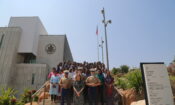
How to vote in three easy steps!
1. Register or re-register to vote & request a ballot
Go to FVAP.gov to complete a Federal Post Card Application (FPCA) which allows you to register to vote and request your absentee ballot at the same time.
- You will need access to a printer as you must print, sign and date the FPCA.
- The quickest way to receive your ballot is to choose an electronic option. Depending on the state, this may be by email, fax, or online download.
- Include your email address so that election officials can contact you quickly if needed.
- If your state delivers ballots electronically by fax only, make sure you include your fax number.
The FVAP website has information to help you determine your state of voting residence, including information for U.S. citizens that have never lived in the United States.
The FPCA will allow you to request absentee ballots for all federal elections in the calendar year, including any special elections. States no longer have to send ballots for an entire election cycle, so we strongly recommend that you get into the habit of completing a new FPCA every January.
View this video on filling out a Federal Post Card Application for more information.
2. Receive and complete your ballot
All U.S. citizens can now choose to receive a ballot electronically. Depending on which state you are eligible to vote in, you might get your ballot electronically by email, fax, or online download.
With electronic delivery selected, ballots are typically sent 45 days ahead of federal and midterm elections, and 30 days before primary, special and run-off elections for federal offices.
Most states allow you to confirm ballot delivery online.
If you haven’t received your ballot by early October, you can request a Federal Write-In Absentee Ballot (FWAB). You can use the FWAB to vote if you don’t think you will receive ballot in time. If you ballot does subsequently arrive, you can submit it too. Only one vote will be counted.
3. Return your ballot
If you have received your ballot, follow the instructions to submit it as soon as you can. If your state allows you to cast your ballot electronically, we recommend that you do so ASAP.
- If you cannot cast your ballot electronically, the fastest method is to mail your completed, signed, and dated ballot directly to the local election officials in your state using the Indian postal system. Your local post office will be able to advise you about the quickest postage option.
- You can choose to use a private courier service, but this will cost more.
- You can drop off your ballot at your local embassy or consulate. This is a free service. However, it is important for you to understand that this will take longer. Mail sent using the diplomatic pouch must go to a U.S. sorting office before it can be sent on to the relevant election officials using the U.S. postal system. You would need to place your ballot in either a postage paid envelope or an envelope addressed to your state’s election officials with U.S. stamps sufficient for delivery once your ballot arrives in the United States. The estimated time from dropping off the ballot to it arriving at your election office is four weeks.
- All states are required to count every absentee ballot as long as they are valid and reach local election officials by the absentee ballot receipt deadline, which is after the election date in some states.
Frequently Asked Questions (FAQs)
I haven't lived in the U.S. for some time. Which state should I register with/which address should I give?
The FVAP website has useful information to help you decide which address and state to use when registering to vote absentee.
Can I send my ballot or registration through the embassy/ Consulate? How long does it take for the ballot to reach its destination?
Yes, you can send your ballot or registration through diplomatic pouch. It can take up to five weeks for mail to reach its destination if sent by an embassy or consulate via diplomatic pouch. All overseas U.S. citizens are advised to submit their forms and ballots accordingly. Ballots will be received and forwarded whenever submitted but you may want to consider using a courier service if submitting your ballot close to or after the stated delivery time for pouch mail. You can submit to the Embassy or Consulate as follows:
Locations and Hours:
U.S. Consulate General Chennai
220 Anna Salai, Gemini Circle, 600006
Drop box: Cathedral Road vehicular entrance
8:00 a.m. – 5:00 p.m. M-F
+91-44-2857-4000
ChennaiCS@state.gov
U.S. Consulate General Hyderabad
Survey No. 115, Financial District, Nanakramguda, 500032
Drop box: Consular Section
2:00 p.m. – 4:00 p.m. M-F
+91-40-6932-8000
HydACS@state.gov
U.S. Consulate General Kolkata
5/1, Ho Chi Minh Sarani, Kolkata – 700071
Drop box: American Center, 38A, Jawaharlal Nehru Road, Kolkata 700 071
9:00 a.m. – 4:00 p.m. M-F
+91-33-3984-2400
KolkataACS@state.gov
U.S. Consulate General Mumbai
C-49, G-Block, Bandra Kurla Complex, Bandra East, 400051
Drop box: Main Entrance – south side (not the visa entrance)
8:30 a.m. – 4:00 p.m. M-F
+91-22-2672-4000
MumbaiACS@state.gov
U.S. Embassy New Delhi
Shantipath, Chanakyapuri, 110021
Drop box: Consular Section Gate 6
9:00 a.m. – 4:30 p.m. M-F
+91-11-2419-8000
ACSND@state.gov
I am a U.S. citizen but I have never lived in the United States. Can I register to vote?
It may be possible for you to register to vote in the state in which you parent or legal guardian – or, in some cases, your spouse or civil union partner – current lives or lived when they last resided in the United States. Visit the FVAP website for state-by-state information and then contact the state’s election officer if you need more information.
My ballot hasn't arrived. What should I do?
If you haven’t received your ballot by early October, you can request a Federal Write-In Absentee Ballot (FWAB). You can use the FWAB to vote if you don’t think you will receive your ballot in time.
If your ballot does subsequently arrive, you can submit it too. Only one vote will be counted.
Is there still time for me to vote?
Registration:
If you haven’t registered to vote, it may not be too late – deadlines vary state by state. You can check the Federal Election deadlines by clicking on your state of voting residence on the FVAP website.
Remember:
- Some states require that voters re-register annually.
- Congressional elections take place every two years.
- Special elections may occur at any time.
Therefore, no matter the date, it’s a good idea to register to vote for the first time or check your registration now. Visit FVAP.gov to get started!
Ballot:
If you’ve received your ballot, follow the instructions to submit it as soon as you can.
If your state doesn’t allow you to cast your ballot electronically, you can submit your ballot through the U.S. Embassy or U.S. Consulates. Your local post office will be able to advise you of the quickest postage option.
All states are required to count every absentee ballot as long as they are valid and reach local election officials by the absentee ballot receipt deadline, which is after the election date in some states.
Can I vote at the Embassy?
No, U.S. embassies and consulates are not polling places.
The fastest way to return a postal ballot is to mail the completed, signed, and dated ballot directly to your state’s election officials using the Indian postal system.
Can I attend an election night party?
There are currently no plans for public parties or screenings of election news footage at U.S. Embassy and Consulates in India.
I have more voting questions. Who can I contact?
If you have questions after checking this webpage and FVAP.gov, you can contact:
- FVAP by emailing vote@fvap.gov.
- Your local Embassy or consulate.
COVID-19 Election Update
FVAP is working closely with state election offices, the Military Postal Service Agency and other federal agencies to bring you up-to-date information on possible mailing delays. Please visit FVAP.gov/COVID-19 for the latest information on any international postal disruptions or contact your installation military post office.
Register and request your ballot by your state’s deadline. You can use FVAP’s easy online assistant at www.fvap.gov/FPCA to walk you through each section of the form. After you finish filling out the FPCA, print it, sign it, and send it to your election office. Most states accept the FPCA by email or fax while some require it by mail. Check your state-specific guidelines at FVAP.gov.
Once you receive your requested absentee ballot, vote and return it as soon as you get it. Remember to carefully follow the instructions, especially if a “security envelope” is required, and sign the package as indicated when returning it.
To save time, send voted ballots electronically if allowed by state law. Voters can check if their state accepts completed absentee ballots by email, fax, or via an online portal at FVAP.gov/ guide.
If a requested ballot has not arrived, use the Federal Write-in Absentee Ballot (FWAB) immediately at www.fvap.gov/FWAB. It works like a backup ballot. If your official absentee ballot arrives after sending in the FWAB, complete and send in the official ballot, too. Only one will be counted.
Make sure the voted ballot is received by your state. Go to FVAP.gov/Guide, click on your state and then the “check the status of your voted ballot” button.
To find your state’s election website for specific information on candidates, elections, contact information, and links to your local election offices, visit the FVAP contact page. You can also reach out directly to your election office for status updates on your registration and absentee ballot.
Additional Information for non-UOCAVA voters: Uniformed service members, their families, and Department of Defense civilians who are currently stationed in the same location as their voting address may visit vote.gov to register to vote and request information from their local election office to vote locally.








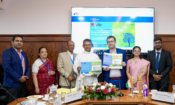
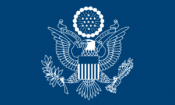
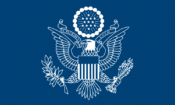

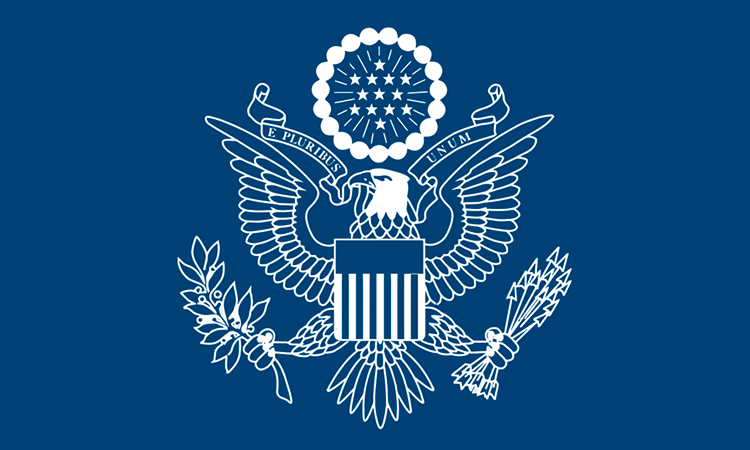
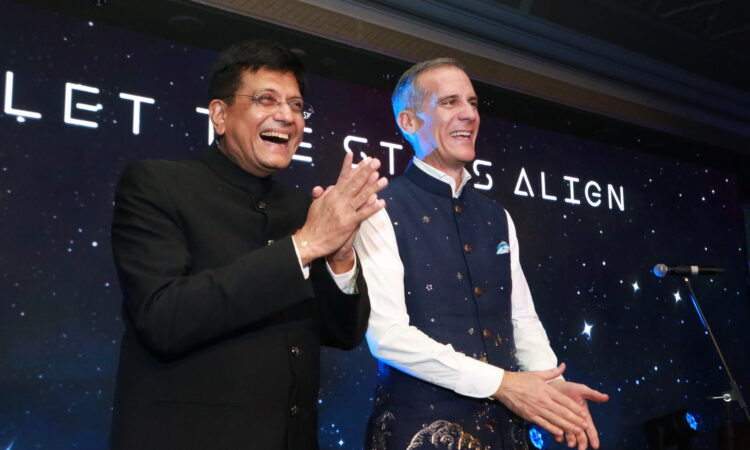



![[L-R] Actor Kamal Haasan, U.S. Ambassador to India Eric Garcetti, Tamil Nadu Minister for School Education Anbil Mahesh Poyyamozhi, and U.S. Consul General in Chennai Chris Hodges celebrate the 248th anniversary of U.S. National Day in Chennai on Thursday, July 18, 2024.](../../wp-content/uploads/sites/71/IMG_2546-175x105.jpg)
